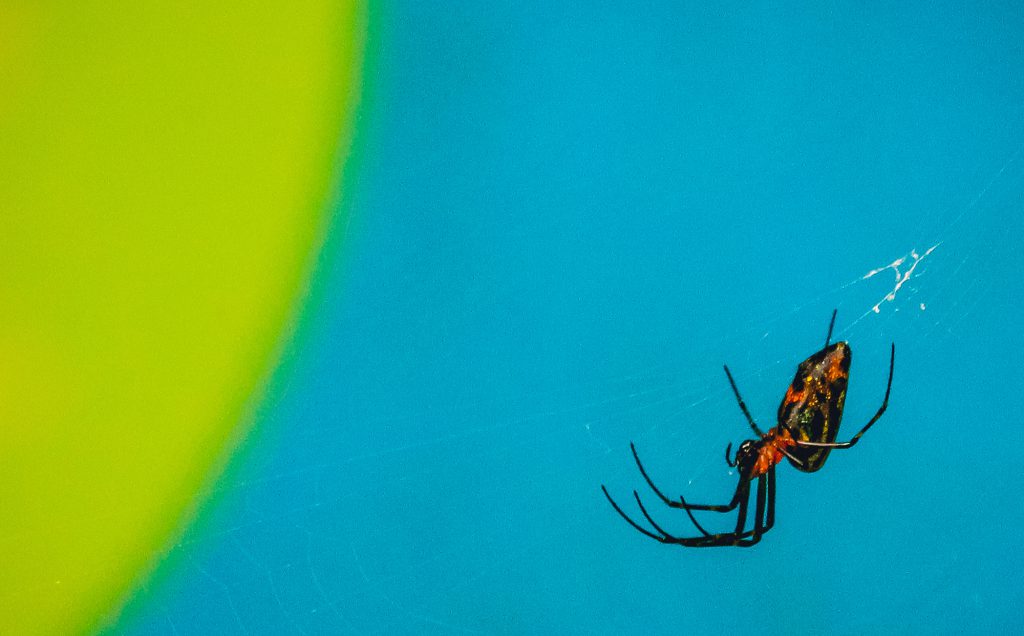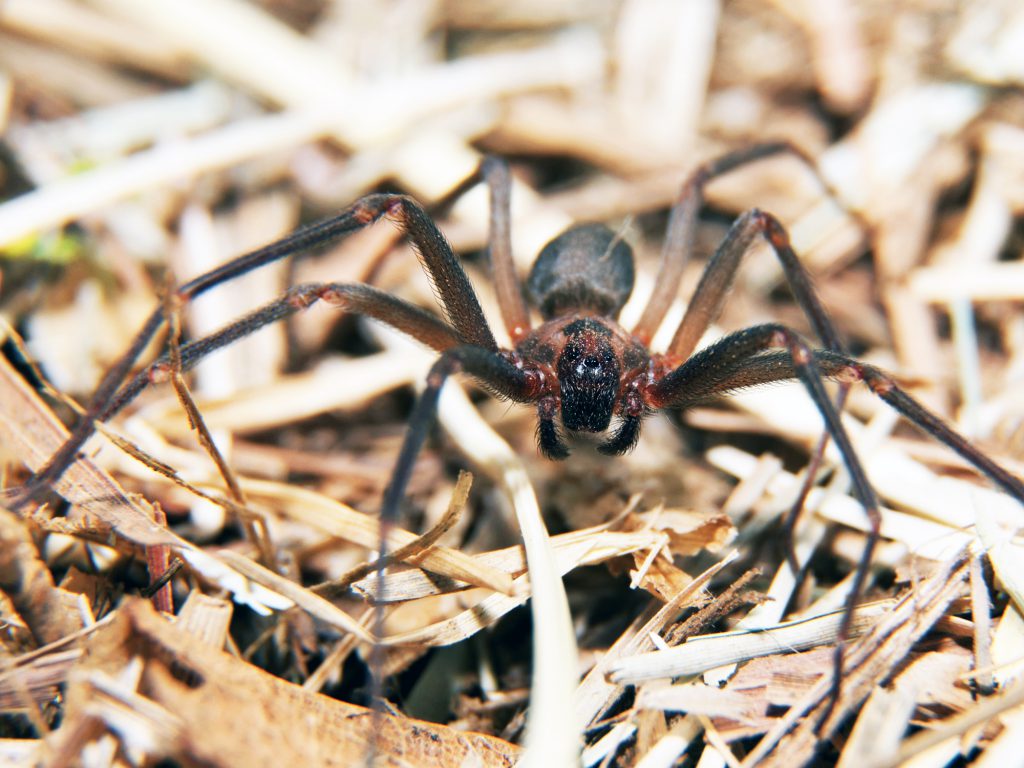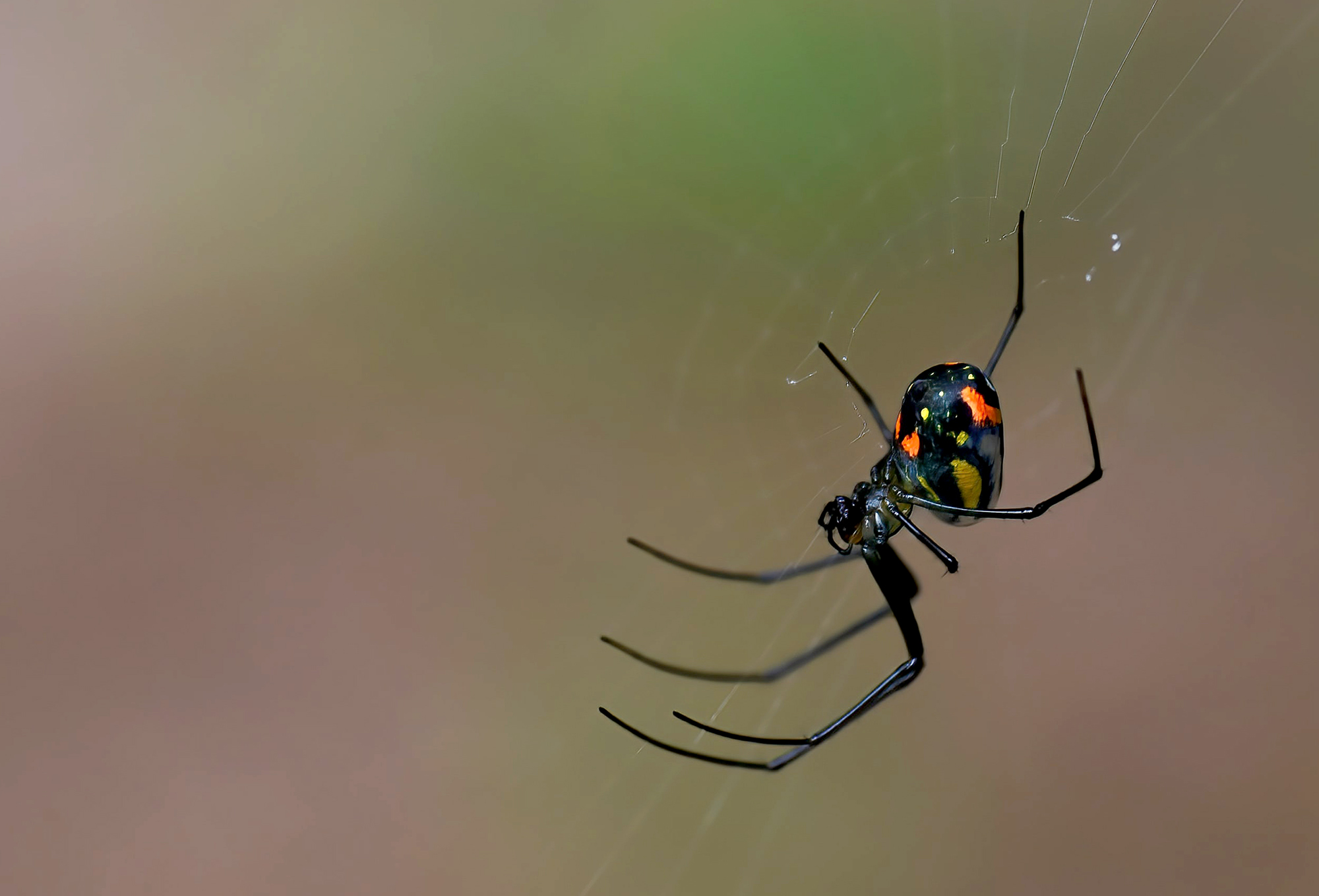As long as spiders have been on the planet, they’ve scared the hell out of people. Even the harmless daddy longlegs (harvestman) tend to evoke unhinged cries of, “Kill it!!!” before meeting the bottom of a Croc. This is probably an evolutionary artifact of prehistoric times when the deadliest spiders were the size of ponies and ran off with feral cave children who didn’t listen to their parents.
But of the 3,000 North American species of skin-crawling, shudder-inducing, room-emptying spiders, the list of deadliest spiders on the continent only has two eight-legged members that actually deserve our panic-based respect. No others make the cut.
If you’re in a black widow or brown recluse region — which means every state but Maine (lucky bastards) — make sure you double-check your full laundry baskets, shoes, and those golf clubs in the garage you haven’t swung in five years before you grab them.

Black Widow Spiders
The black widow, with that blood-red hourglass on her abdomen, is the epitome of death — certain death at that. At least in the movies. In truth, their name might strike more fear than their bite, but the bite of the females can put you on your ass with severe muscle pain, abdominal cramps, hyperhidrosis, tachycardia, and muscle spasms for up to a week. No, you won’t die, but you may feel like you’re dying.
There are five species of widows throughout North America: red, brown/gray, Northern, Western, and Southern. Each has its own unique identifying marks, but again, it’s the females that have the venomous bites. Black widows aren’t aggressive but will bite if pestered or threatened.
Interesting story: Allan Blair, a professor at the University of Alabama, let himself get bitten by a black widow as part of his research into the neurotoxicity of its venom on humans. He managed to take notes for two hours after the bite until he was in too much pain to write anymore and then spent two agonizing days in the hospital. Supposedly, he opted out of a second bite to further his research.

Brown Recluse Spiders
If given a choice between a rattlesnake bite and a spider bite, 10 out of 10 sane people would pick the spider. But what if the spider was more poisonous than the rattlesnake? Meet the brown recluse spider.
While the recluse bite introduces a smaller amount of venom than a rattlesnake bite, most people don’t even feel the spider when it chomps down on them, which makes the venom that much more dangerous. Swelling, discoloration, tissue death, and scarring can occur. Some cases can be downright nasty, complete with open wounds and rotting flesh.

An adult brown recluse spider is about the size of a quarter and has a violin-shaped mark on top of its cephalothorax where the legs attach. Like black widows, brown recluses aren’t aggressive, but they’ll bite when threatened.
There are 13 species of recluse, including the brown recluse, throughout the South-Central and Midwestern US: the Arizona recluse, Baja recluse, Chilean recluse, desert recluse, Martha’s recluse, Russell’s recluse, Apache recluse, Grand Canyon recluse, Tucson recluse, Mediterranean recluse, Big Bend recluse, and the Texas recluse.
Read Next: Starter Kit: How to Hunt Rattlesnakes








Comments